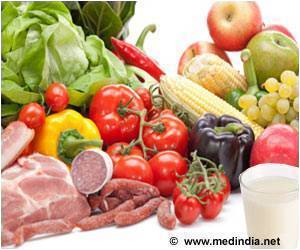A color coded system for food labeling in cafeterias seems to have increased customer awareness about healthy eating and nutritional food choice, researchers claim

While many restaurants and other food service locations are now posting the calorie content of their standard items and make detailed information – such as fat, cholesterol and sodium content – available on request, the researchers note that interpreting this information requires knowledge and skills that many do not possess. To find a simpler way to encourage more healthful purchases at the hospital's food service locations, MGH Nutrition and Food Service put together a plan that started with color-coding each item sold in the main cafeteria – green for the healthiest items, such as fruits, vegetables and lean meats; yellow for less healthy items, and red for those with little or no nutritional value. Signage encouraged frequent purchase of green items, less frequent for yellow and discouraged purchase of red items. Cafeteria cash registers were programmed to record each purchased item as green, yellow or red, starting three months before the labeling intervention began.
Previous reports from the MGH team have described how the program – a second phase of which included rearranging items in refrigerators to bring healthy choices to eye level – increased sales of green items while decreasing purchase of red items. The current paper reports results of a survey taken during the month before and the two months after the labeling intervention began in March 2010. Research coordinators approached customers who had just made purchases and asked them to participate in the brief survey. Participants were asked whether they had noticed any nutritional information in the cafeteria or on food labels, which factors most influenced their purchases, how often they consider nutrition information before making food choices, and how often they "choose food that is healthy." After introduction of the color-coded labels, respondents were also asked whether they had noticed the labels and if the labels had influenced their purchases.
During the baseline period before the labeling intervention, 204 individuals completed the survey, and 243 did so in the weeks following. While 46 percent of respondents indicated that health/nutrition was an important factor in their choices at baseline, 61 percent did so after the intervention. The percentage of those indicating that they looked at available nutritional information before a purchase doubled from 15 to 33 percent, although there was no significant difference in the percentage reporting they usually or always choose healthy foods. Respondents who reported noticing the new labels bought a greater proportion of green items and fewer red items than did those who did not notice, and the influence was even stronger among those who indicated being influenced by the labels.
"While our results can't give concrete information about customers' nutritional knowledge, people were more likely to indicate that health and nutrition were important factors in their decision when the labels were in place, and those who noticed the labels were more likely to purchase healthy items," Sonnenberg says. "Although we haven't directly compared these "traffic light" labels to other systems, we can say that these labels appear to be more effective than the standard nutritional labeling available on packaged products. The strategy is simpler for customers to understand at the point of purchase and, once the appropriate labels for each item are determined, is relatively easy to implement."
The labeling system – along with second phase of adjusting the positioning of items, which was not included in the current study – as now in place at all MGH food service locations. Co-authors of the Preventive Medicine article are Susan Barraclough, MS, RD, LDN, and Emily Gelsomin, RD, LDN, MGH Nutrition and Food Services; Anne Thorndike, MD, MPH, MGH division of General Medicine; Douglas Levy, PhD, Mongan Institute of Health Policy at MGH; and Jason Riis, PhD, Harvard Business School.
Advertisement
Source-Eurekalert














